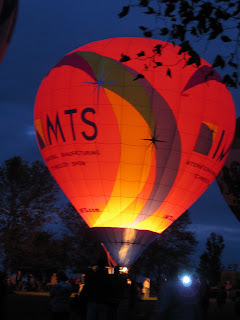


 This museum is an incredible adventure in the history of man's flight efforts. It shows the many machines man has invented for flight. The first photo is of a replica of the Wright Brothers plane. This plane was built with steering mechanism suited for bicycles because the Wright's were bike builders.
This museum is an incredible adventure in the history of man's flight efforts. It shows the many machines man has invented for flight. The first photo is of a replica of the Wright Brothers plane. This plane was built with steering mechanism suited for bicycles because the Wright's were bike builders.The Enola Gay is the plane that dropped the atomic bomb on Japan. It has been rebuilt twice. Shortly after it was rebuilt the first time, it was flown with insufficient fuel and landed in the ocean. It had to be rebuilt, of course.
The fastest passenger plane in the world is the French Concorde. While it, too, has been replaced, the guide told a story of two flights leaving the U.S. about the same time--one a Concorde, one a 707. The Concorde made a round trip with two separate passenger loads before the 707 reached its first destination.
The final picture is the SR71--the famous Blackbird used for aerial reconnaissance during the height of the Cold War. It is still one of the most high tech designs in existence. It was one of the earliest planes with built-in radar evasion characteristics. It was capable of flying at over 85,000 feet. At that altitude, its photographic equipment could reach out laterally 500 miles. From its 85,000-foot operating altitude, its camera could identify the state on a car's license. In many cases it conducted surveillance while surveying the borders of its target and not have to overfly to complete its work. It could fly only an hour and a half without refueling. The guide said that it cost $85,000 an hour to operate.














































